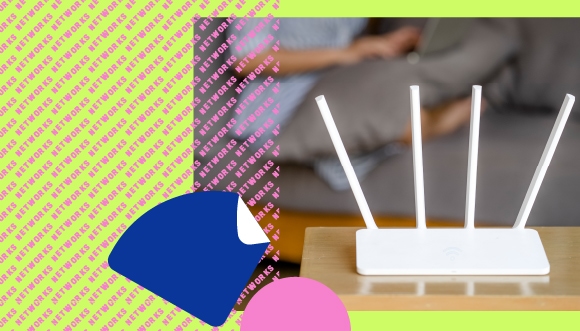Your network devices – better known as your modems and routers – are likely the most underappreciated gadgets in your house. We usually only think of them when the Wi-Fi goes down. The rest of the time, they’re silent heroes, working behind the scenes while our other devices hog the spotlight.
We seldom give our network devices enough credit for all their hard work – but all of that is about to change: It’s time to show them the love and care they deserve by doing what we can to keep them safe from cyber threats.
Here’s what you need to know about keeping your networks cyber secure.
Why you need to protect your home network
The main threat against your home network is Wi-Fi theft. Cyber criminals are capable of accessing your home network – particularly if you have it unsecured (not password protected).
Trespassers or unfriendly neighbours could be using your Wi-Fi to download large files like movies or games, using up your bandwidth, and potentially leaving you with hefty overage charges.
Another risk? Criminal charges.
If a cyber criminal breaches your Wi-Fi, you could become liable for any criminal activities that happen over your network – even if you know nothing about them.
An unsecure network can invite unsolicited trespassers to use your Wi-Fi to conduct illegal activity, like downloading illegal videos, photos or music. In many cases, that activity can be traced back to your network, leaving you responsible for the activity that took place.
Not protecting your home network also leaves you vulnerable to hackers who could compromise all of your connected devices, including your computers and smartphones.
That could lead to the installation of malware or spyware , loss of personal data or files, and access to any of your connected smart devices including your thermostat, smart lights or video cameras. This may allow hackers to spy on you in order to find out when you’re not home.
Vulnerabilities to your home network
Here are the vulnerabilities you need to address to protect your home network.
Lack of Wi-Fi security
The biggest threat to Wi-Fi security is Wi-Fi owners who don’t take steps to protect their networks. All routers come with a set of default settings that, if left unchanged, leave their owners vulnerable to cyber threats.
Misplaced routers
This may seem silly – but where you place your router in your house impacts how vulnerable you are to cyber attacks.
Placing your router near a window, for example, will make your router’s signal stronger to anyone outside based on its proximity, making it easier to hack without losing its connection.
Unsegregated networks
Having all your devices on one network can be risky, and this is especially true for your smart devices.
Smart devices are often less secure than many other devices because they’re designed to be accessed quickly and easily. For example, you don’t need a password to activate your voice assistant, open your smart fridge, or activate your smart lights.
How to protect your network
Change the default network name and password
Don’t default to using defaults – always change your network name and password to something unique.
When you do configure your network, avoid using your own name or the name of a family member or pet as your username. Using any form of personal information may make you an easy target for someone seeking to hack you.
You should also use a passphrase or complex password that’s unique to your network – no repeating other passwords you’re using elsewhere.
Make sure all devices on your network are updated
Every device you own that requires a Wi-Fi connection is connected to your network. Unfortunately, this means that a security breach of one of your gadgets could lead to your entire network getting infiltrated by hackers.
Keep your network secure by always downloading new software updates.
Place your router in a secure location
You can frustrate would-be hackers by placing your router as close to the middle of your home as possible. This makes it more difficult for them to get a strong signal from your Wi-Fi network, reducing the likelihood that they’ll be able to hack your network.
Use a separate network for smart devices and guests
For the safety of your network and your personal data, it’s best to set up a secondary network for smart devices.
A secondary network makes it more difficult for hackers to gain access to your gadgets. If one of your smart devices does get hacked, your primary network and the devices on it will likely be unaffected.
Using a secondary network for your guests is also a best practice. This means less sharing of your password, reducing the chances it will fall into the hands of a cyber criminal.
Conclusion
Our network devices are the glue that keeps all of our devices connected to each other – and to us!
It’s due time to give them a virtual hug on behalf of everything they do to keep us together.
By educating yourself on network security, you’ll be doing your part to protect yourself, and your device clique from potential cyber attacks.